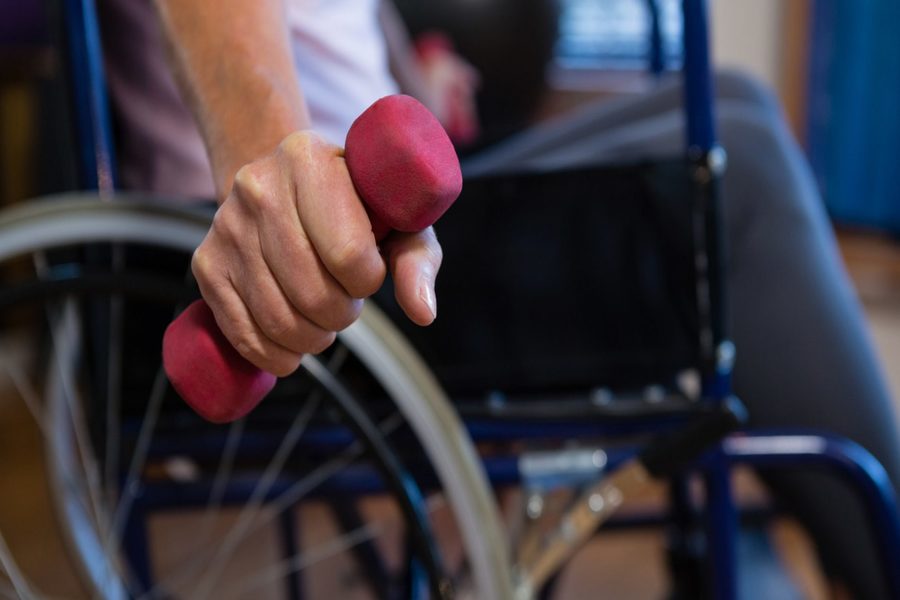How to Exercise with Limited Mobility?
People with limited mobility are tired of hearing that fitness is not their cup of tea. If your mobility is limited, whether due to injury, illness, or disability, it just means that you need to get creative with your workouts. Take the case of Amrita.
Amrita injured her leg after a car accident and had recently developed limited mobility. After recovering, being a fitness freak, she was very keen to learn new ways to stay active and healthy. After meeting with a therapist that specializes in helping people work out who have limited mobility, Amrita was able to reinvent her fitness routine.
Struggling to find a way to stay active and healthy with limited mobility? We’ve got you covered. In this article, we’ll be taking a look at some of the most effective tips on how to exercise with limited mobility.
How to exercise with limited mobility
- Get into the Right Mindset
The biggest barrier to exercise with limited mobility is the negativity around you regarding the same. This negativity also becomes the primary reason for demotivation even after you’ve developed the habit. This is why getting into the right mindset before starting exercise is essential.
Fact of the matter is that if you’re reading blogs online about how to exercise with limited mobility, you’re already motivated and confident that you can do it. You can check the first step. Here are some other things that you can do to stay motivated about exercising:
- Include exercise in your daily calendar in the morning and wake up half an hour before to get into the right mindset before.
- Changing into workout clothes can also help you to get into the right mindset and increase your chances of making the habit.
- Make a playlist of the songs that energize you from within. Listening to this playlist while working out will make sure that you stay motivated.
- Warming Up
Warm-ups are an essential component of workout routines, especially for people with limited mobility. Amrita’s therapist made sure that she was getting a proper warm-up before exercising. Warming up your muscles and stretching allows you to avoid injury and stay safe while exercising.
The central goal of warming up before working out is to make sure that your muscles and joints are warm and limber, to avoid pulling anything or putting strain on your body. However, warming up with limited mobility is going to be a little different. Here are a few warm-up stretches specifically designed for limited mobility:
Arm Stretches
- Use one hand to stretch the other, with the fingers down. This allows you to stretch along the forearm. Hold for 30 seconds.
- Put one arm out straight across your body, with your bicep pressing against your chest. Now, pull on your extended wrist with your other hand gently. Repeat the stretch with the other arm.
- First, bend your elbow and lift your arm up over your head. Then, stretch the elbow higher with your other hand gently. Hold 30 seconds. Repeat for the other arm.
Leg Stretches
- Sit in a chair or stay in your wheelchair if you have one for this exercise. Raise one thigh off of the seat of your chair and pull your knee as close to your chest as possible using your hands. Repeat the same with your other leg.
- While sitting in a chair touch your toes again. But, this time stretch your legs out as much as you can first.
- Following a Suitable Exercise Routine
First, consult your doctor or physical therapist as Amrita did, and find out a suitable exercise routine for yourself. Although any type of exercise provides health benefits, you must include these three type of exercises into your exercise routine:
- Cardiovascular Exercises: Exercises that raise your heart rate and increase your endurance.
- Strength Training: Exercises that involve using weights or other resistance to build muscle and bone mass, improve balance, and prevent falls.
- Flexibility Training: Exercises that enhance your range of motion, prevent injury, and reduce pain and stiffness.
Your doctor or physical therapist will be able to provide the most suitable exercise routine since they know your condition better.
- Cool Down
A balanced exercise routine also consists of a cool-down stretch that allows your breathing, and blood pressure to return to normal and helps prepare your muscles for the next time you exercise. Cooldown is especially essential for our readers like Amrita as it reduces the chance of your muscles being sore after exercise.
By stretching out muscles and properly cooling down, you will be more prepared to exercise sooner after later. If your body does not cool down properly, it will take a long time to feel up to exercising again. All of the warm-up exercises given above can also be used as cool-down exercises.
- Getting Most out of Your Exercise
Paying attention to your body rather than zoning out while working out allows you to experience a greater benefit. Focus on the rhythm of your breathing, your feet striking the ground, your muscles tightening as you lift weights. Doing this allows you to focus on the response of your body as you work out.
Adding this mindfulness element to your workouts will be extremely beneficial both for your physical health as well as your mental well-being. For starters, you’ll be able to get the most benefits out of your exercise. In addition, it also helps you experience more benefits in terms of your mood and gives you a sense of well-being.
Conclusion
Limited mobility caused by injury, disability, illness, or weight problems is a great impediment for many people in their pursuit of staying active and fit. But it doesn’t have to be. With the right mindset and a perfectly balanced routine, people with limited mobility like Amrita can exercise and stay healthy.
To sum up, getting into the right mindset is the first thing that you need to do before you start exercising. Warm-up, stretching, and cool-downs are also important components of your exercise that help you stay safe when exercising. There are various exercises that are specifically designed for people with limited mobility that you must include in your routine.




























